Brian Clegg's Blog, page 29
April 14, 2022
Review: Tremors in the Blood ****
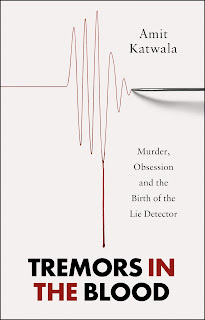 There is something beguiling about the concept of the polygraph - the proper name for what is usually known as a lie detector. Surely it makes sense, if technology exists that can tell if a statement is true or false, that lie detectors should provide an important adjunct to the legal system? Unfortunately, though, despite a public assumption that they are scientific, there is absolutely no evidence that lie detectors work - and plenty of evidence that they don't.
There is something beguiling about the concept of the polygraph - the proper name for what is usually known as a lie detector. Surely it makes sense, if technology exists that can tell if a statement is true or false, that lie detectors should provide an important adjunct to the legal system? Unfortunately, though, despite a public assumption that they are scientific, there is absolutely no evidence that lie detectors work - and plenty of evidence that they don't.What Amit Katwala does in this very readable account is give us an insight into the early development and deployment of the polygraph. In part this is the story of three key individuals - two behind the technology and one a police chief who instigated the polygraph's development, though the larger part of the book comprises a series of true crime stories, introducing in some depth a handful of early legal cases where the polygraph played a role.
The two developers, John Larsen and Leonarde Keeler, both seem to have had serious character flaws, and were single-minded in their assumption that monitoring blood pressure and breathing variations were sufficient to tell the difference between a true and a false statement. While there is no doubt that some people do experience shifts in these metrics when lying, some don't... and everyone, particularly in the scary circumstances of a police interview, is likely to have fluctuations that have nothing to do with the veracity of their answers - not helped by the way that many early attempts seemed to turn the whole thing into a media circus with crowds of reporters and onlookers present.
The crimes are described in immersive narrative fashion, some taking place in the febrile setting of Capone's Chicago, though things start in the rather more refined precincts of Berkeley, California. I don't usually read true crime books - I find reading about other people's suffering for entertainment rather ghoulish - but the context of the lie detector's development and public attitudes to it make it a rather different phenomenon here.
Katwala is clearly more than up to the challenge of presenting these stories in a gripping fashion, and it is genuinely fascinating to see how the polygraph gained its reputation. It would have been good to have had a bit more of the science as to why the device is unreliable and never can be trusted, especially in the context that it is still widely used around the world and is even creeping into use in the UK, where historically it has been treated with well-deserved suspicion. Developments since the 1930s, including using various other equally non-definitive measures such as brain wave patterns, is briefly summarised in an epilogue, which is understandable given the focus is the birth of the lie detector, but perhaps could have had more detail.
Katwala always makes it clear that this was (and is) a dangerous and untrustworthy device. Arguably it is on a par with astrology - both are based on scientific observations (astronomy and physiological measurements respectively), but both draw totally unjustified conclusions from those observations. This is a timely exploration of this dubious technology.
See all of Brian's online articles or subscribe to them for free here.Tremors in the Blood is available from Bookshop.org and Amazon.co.uk
Using these links earns us commission at no cost to you
April 12, 2022
Gambling on a fallacy
 Probability is at the heart of much of life - yet it can seem counter-intuitive. One of the best-known aspects of this is the so-called gambler's fallacy (and its inverted equivalent, the hot hand fallacy).
Probability is at the heart of much of life - yet it can seem counter-intuitive. One of the best-known aspects of this is the so-called gambler's fallacy (and its inverted equivalent, the hot hand fallacy). Take a simple example of tossing a coin repeatedly. A head comes up ten times in a row. Now we all know that, on average and over time, a fair coin should give us the same percentage of heads and tails. So it can seem surprisingly reasonable that the next throw is more likely to be a tail.
That's the gambler's fallacy, because, of course, the coin has no memory. It has no way of telling what came before, so the next toss is still equally likely to be heads or tails. (Some argue that actually it's more likely to come up a head again - for a demonstration of why this can be the case, see the start of my video below.)
At a simple level, it's quite easy to get your head around what's happening here, but some of the subtleties of the gambler's fallacy are still easy to miss - and that's where a new paper by Steven Tijms comes in (you can read the full thing here). Tijms points out how counter-intuitive the behaviour of randomness is. For example, he shows how to calculate the chances of getting, say, five or more heads or tails in a row in 100 coin tosses - the answer is remarkably 97.2%. Even a run of seven or more with the same face is more likely to occur than not in 100.
We also see how the law of large numbers - the idea that, for example, the ratio of heads to tails will get closer to 50:50 as we repeat the toss many times - doesn't work the way we tend to assume it will. In part this is because we underestimate what 'many times' means. Tijms points out, for example, to be 95% sure that the relative frequencies of heads and tails is in the 48-52% range it's necessary to toss a coin around 2,500 times. But also there's something more fundamental that fuels the gambler's fallacy.
Because the relative frequencies are tending towards 50:50 as we get more and more, it's tempting to think that the gap between number of heads and number of tails thrown must reduce. And so, if there's a big gap, say many more heads than tails, it's hard to resist the feeling that the coin needs to counter this by coming up with a lot more tails. But this is still the gambler's fallacy. It's perfectly possible for those relatively frequencies to get closer and closer to 50:50 yet to have the gap between numbers of heads and tails increase rather than decrease.
I've only been able to give a taster of Tijm's paper - I'd recommend taking a look as it is very readable and is not loaded with scary mathematics.
See all of Brian's online articles or subscribe to them for free here.Here's the video for the coin toss oddity:
April 7, 2022
A fake comment with a difference
 One of the less enjoyable aspects of having a blog is having to dismiss all the fake comments that are blatant attempts at getting advertising links posted onto a website for free.
One of the less enjoyable aspects of having a blog is having to dismiss all the fake comments that are blatant attempts at getting advertising links posted onto a website for free.Traditionally, these fake comment adverts have been distinctly feeble. Some blatantly ignore the topic - so, for instance, a post about why I don't like opera might get links for the wonders of a brand of dog food. Others go for what they presumably hope is more subtlety. They start with a bland comment, something like 'Great post, I really agree with this! You should see this too'. But the lack of direct connection to the topic you are then directed to is a giveaway, as in a post about the totally shocking contents list of something I bought at the supermarket being linked to a site selling garden lights.
Today, though, and perhaps scarily, whatever algorithm is used to select a post to put a fake comment on has finally come up with something that appears to be directly relevant to the text of the post. There was an attempt to add to one of my book reviews what appears to be download links for that book, with links headed 'Download now', 'Download full' and 'Download LINK'.
Of course I don't know if these actually are links to pirated copies of the book in question - I have no intention of clicking on one. But the fact remains that the comment looks far more legitimate than the other fakes - though the author of this pseudo-comment gave the game away by putting in a total of six links. And perhaps they should realise that no legitimate book review site would accept a comment with links to download pirate copies (or worse).
What did disappoint me was that they didn't choose one of my books as the one to award the honour of the first of these more sophisticated dodgy links. It wasn't even a review I wrote. It was a guest post by Michael Bycroft, reviewing the 2009 title Branches by the excellent Philip Ball. It's a good book, but I can't help but feel a little jealous.
April 2, 2022
Science and truth
 Image by Ben Collins from UnsplashI was reading for review a book called The Joy of Science by Jim Al-Khalili recently and was struck by what seemed to me an odd statement. Al-Khalili said 'A physicist like me tries to uncover ultimate truths...' Let that sink in for a moment while I tell you a story.
Image by Ben Collins from UnsplashI was reading for review a book called The Joy of Science by Jim Al-Khalili recently and was struck by what seemed to me an odd statement. Al-Khalili said 'A physicist like me tries to uncover ultimate truths...' Let that sink in for a moment while I tell you a story.Many years ago, a work colleague described being at a dinner party where he heard a remarkable tale. The storyteller had heard that someone was in the centre of the smallish town of Sunningdale and saw a man walking his dog. The town centre is unusual in that a railway line runs across the main road, so there's a level crossing there. The dog walker was picking up a takeaway from the tandoori restaurant right by the level crossing. He had clearly not thought this through before setting out. He couldn't take the dog into the restaurant while he collected his food. So he tied the dog's lead to the level crossing barrier and nipped inside. He was only going to be gone a minute.
What the dog walker hadn't noticed is that the barriers were in the down position because a train was about to pass by. Moments later, the train rumbled through and the barriers opened. Leaving the dog dangling from its lead high in the air, to the bewilderment of the emerging dog walker. Everyone at the dinner party thought this was hilarious. So did my colleague - even more so than the rest of them, for reasons we will explore in a moment.
If you heard that story, would you believe it was true? There's an old saying in science that the plural of anecdote is not evidence. You need something stronger than a tale or two told at a dinner party to think that something is a fact. Of course, plenty of anecdotes are true, but just because we hear a story like this is not sufficient to start accepting something. No one at the dinner table had seen this happen - the teller of the tale had heard it from someone else. There was no corroborating evidence, such as a photograph of the dangling dog. Again, this wouldn't enough in itself - it can be faked easily enough - but it would be a contribution to the balance of likelihood. And there was no way of finding out more, especially in those pre-internet days.
As it happens, my colleague knew something the others present didn't. When he was at a dinner party and the conversation was a little dull, he had a habit of throwing a fictional tale into the mix. Some months before, he had made up the story about a dog being tied to the Sunningdale railway barrier. This story had spread from person to person - and now he was hearing it back from someone who hadn't been present when he told it, as if it were fact. His fiction had taken on a life of its own.
When we were thinking about what we need to make it likely that the story was true, we were, in a loose way, indulging in the scientific method. If this had really happened it would have been true. A truth. And assuming we weren't there, whether or not we accepted that truth would depend on the quality of evidence supporting the assertion.
So isn't this exactly what Jim Al-Khalili was saying? Why do I consider it odd? This is because science works at two levels, something highlighted in a cruel but amusing fashion by the great physicist Ernest Rutherford, who is said to have remarked 'All science is either physics or stamp collecting.' This is clearly intended as a humorous jibe against sciences other than physics - and like most people with a physics background, it makes me grin. But if we take away the subject rivalry, there is a serious underlying point. Science involves two different things. One is to establish what happens. This is the stamp collecting part. It's vital. This is where we find the facts. The truth about what is observed. But arguably it's not the interesting part of science. Science only takes off when it attempts to establish how or why something happens. And there, we usually don't establish a truth, but rather develop a best theory given the present evidence that makes testable predictions and that may change in the future.
Al-Khalili gives as an example of a truth the value of the acceleration due to gravity on the Earth's surface. This is an easily established fact. Or even simpler, there is the fact that things with a positive weight fall to the Earth if we let go of them in mid-air. But the interesting science is where that value for acceleration comes from, or why things fall in the first place - and there we usually need to have a theory.
Take another example - it is an observational fact that galaxies appear to rotate faster than they should be capable of doing without flying apart. Leaving aside the possibility that there could be an error in the calculation of how fast a galaxy can rotate and remain stable (this has been suggested), it appears to be true. However, what we can't do is make the leap from this fact to saying that it's true that dark matter exists. Dark matter is a theory to explain what is happening. As it happens, there are other theories such as MOND based on modified gravity that explain the observations without resorting to the existence of dark matter. Some evidence supports dark matter better, other evidence supports modified gravity. So it is absolutely not a scientific truth that dark matter exists. The stability given the rotation speed is what happens (subject to the proviso above), but dark matter (or modified gravity) is an explanation of why it happens - this is the really interesting science, but it's not an absolute truth.
Note that this does not mean that we can treat all theories equally. Just as is the case with the dog at the level crossing, we need to examine the evidence. If we aren't able to do that personally, it makes sense to rely on experts to examine that evidence for us (just as it's better to have an expert undertake brain surgery on you, or to fly a plane). And in many cases (unlike dark matter), there is a widely supported theory that is the best we have, unless and until new evidence comes up. Human-created climate change is a good example of this. Although it's fine to continue to look for new evidence which may reinforce or disprove it, the only sensible course is to go with the current theory that is most widely supported by subject experts.
Science, then, is not about uncovering ultimate truths, but concerns something more subtle. And, I would suggest, is all the better for it.
March 29, 2022
Stretch your brain with a visual puzzle
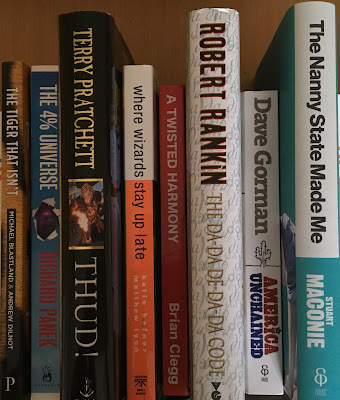 A while ago, I wrote a book called
Conundrum
which takes the reader through a host of puzzles and ciphers. Now and again I like to add a bonus puzzle - the latest is now available.
A while ago, I wrote a book called
Conundrum
which takes the reader through a host of puzzles and ciphers. Now and again I like to add a bonus puzzle - the latest is now available.The premise is that a spy has put the books shown here in a prominent position to send a hidden message to a confederate.
To the person in the know, what you can see in the image tells when a meeting will take place. But when is it?
Unlike a conventional cipher, the requirement here is not just to work out the relationship between one set of characters and another - you need to find the message in the first place.
This kind of puzzle is an aid to creative thinking - you need to look for ways that the book spines can convey information and decide how to extract the required information from surroundings that are simply there to distract.
The message is concealed in a systematic way - it is not random. You are looking for a single word.
As a small incentive, I will send a signed copy of my brand new book Game Theory to one of the correct entrants who send in a solution by 10 April.
You can see the image bigger by clicking on it - if you'd like to enter your solution, go to the bonus puzzle page on the Conundrum website.
March 26, 2022
Can we learn from cautionary tales?
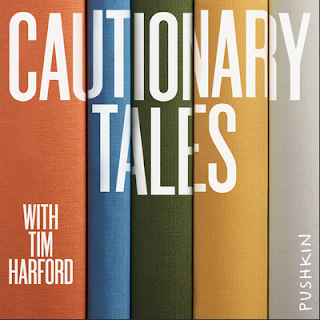 I'm a big fan of Tim Harford's Cautionary Tales podcasts. In them, the economist and presenter of the BBC's excellent Radio 4 show
More or Less
relates examples of where human error and misunderstanding has resulted in disaster (or, occasionally, triumph). I also love those pop psychology books such as Dan Ariely's
Predictably Irrational
which tell us about all the ways we make bad decisions and suffer from biases, This is perhaps in part because I made a bad decision myself in my first year at university, when I wanted to take psychology as my fourth subject in Natural Sciences and instead allowed my tutor (a crystals scientist) to persuade me to do crystalline state instead, which I hated.
I'm a big fan of Tim Harford's Cautionary Tales podcasts. In them, the economist and presenter of the BBC's excellent Radio 4 show
More or Less
relates examples of where human error and misunderstanding has resulted in disaster (or, occasionally, triumph). I also love those pop psychology books such as Dan Ariely's
Predictably Irrational
which tell us about all the ways we make bad decisions and suffer from biases, This is perhaps in part because I made a bad decision myself in my first year at university, when I wanted to take psychology as my fourth subject in Natural Sciences and instead allowed my tutor (a crystals scientist) to persuade me to do crystalline state instead, which I hated.On this morning's walk, I was listening to one of Tim's podcasts from June 2020 (I came to the series relatively late and am catching up on earlier episodes). In it, he admits that he himself did not step back and think about the implications when he first found out about the pandemic and, as a result, assumed, for example, that he would have money coming in from gigs over the summer. He compares this with other, more disastrous occasions when people did not change from their planned activity, despite evidence that they needed to (for example, in the remarkable case of the tanker Torrey Canyon, which he covered in his very first podcast).
What lesson did I learn from this cautionary tale? If Tim Harford, someone who spends his working life thinking about this kind of thing, did not change his behaviour in the face of one of the common errors and biases he describes, is it likely any of us will? Is there actally any point to this kind of information? I confess, I quickly forget most of the specific cognitive biases within days of reading about them (in part because there seem to be so many).
I think the answer is that these tales and books are valuable - but not in the life changing way they tend to be presented. They're partly worthwhile because they are very engaging. They tell us about the human condition and why we make so many mistakes. And hopefully, even if we all, Tim included, fail sometimes to learn the lessons, there are a few underlying motifs that those of us who are fans are likely to pick up on at least some of the time:
Be aware of human failings (yours included)When you hear a piece of information that may be important to you, question it and dig deeperBe prepared to change your viewpointThink before you act, even if guided by an expert (or GPS)I suspect this kind of broad guidance is all the practical benefit we get from these tales and books. But just as is the case with diets and health, there isn't enough to make a book out of the valuable stuff. The health thing is basically eat a varied diet with plenty of vegetables and a reasonable amount of fruit and not too much fat and sugar while taking regular exercise. Doesn't make much of a book. Similarly here, the 'think before you act' type advice is the only important lesson you can hope to benefit from and the rest is window dressing. I'm not going to stop listening to these podcasts and reading these books: I very much enjoy them. But I realise that they aren't going to change my life much, once I've got those basics embedded in my brain.March 22, 2022
A new (free) way to subscribe to all my online writing
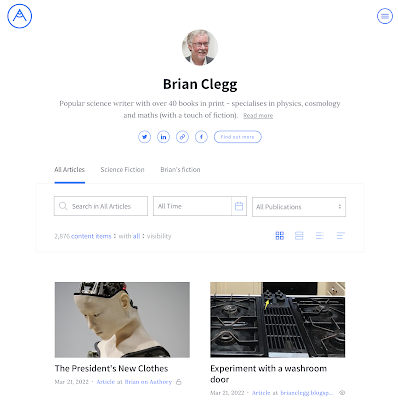 Thank you to those of you who currently subscribe to my personal blog Now Appearing.
Thank you to those of you who currently subscribe to my personal blog Now Appearing.I'm trying out a new way to subscribe (still for free) to all my online writing - I'd be grateful if you could give it a try and see if it works for you.
Just go to authory.com/BrianClegg and sign up with your email address. You will then get notifications when I publish new pieces online, not only in this blog but also in a range of other places from Nature and Chemistry World to popularscience.co.uk. You can also take a look at anything I've published previously there.
Whether or not you already subscribe, please do take a look.
March 21, 2022
Experiment with a washroom door
On my morning walk today, I was listening to one of Tim Harford's Cautionary Tales podcasts. In it, he mentioned the importance of design and referred in passing to one of my heroes, Don Norman. In his book, The Design of Everyday Things, Norman pointed out many examples of objects where the designer has gone for elegance at the expense of usability. A simple example he gave was the controls for a cooker hob. Take the example below (images from Unsplash):

Which of the burners does the control with the arrow correspond to? It's obvious, isn't it? Because the designer thought about usability.
Now look at this hob:

Again, which ring is the control responsible for? This time we can only be sure by looking for some kind of caption to the controls, because the design totally ignores the functionality, preferring to provide a neat line of parallel knobs, building in no information.
Many years ago, when I worked at British Airways, I did a non-scientific study on another example of a designer prioritising form over function. This was at BA's then new (though said in 2021 to be likely to be sold off) Waterside development. The toilets in the building had rather beautiful, tall wooden doors, which only opened inwards as seen from the the corridor. But the designer liked symmetry. They had put pull handles on the inside of the toilet doors or they couldn't have been opened - so they also put pull handles on the outside of the toilet doors.
Now, pull handles and push plates on doors are not just decorative - they combine form and function. They make it clear to the user what they have to do to open the door. This designer, though, broke the communications code. I stood outside the toilets on one floor and watched people going in. (I think I had a clipboard to make the observation look a bit less creepy.) Lots of people went in. And every single one pulled the pull handle, then found the door wouldn't open, then pushed. Time and time again, the design failed. The chances are many of these people used that door every day. But they still kept getting it wrong.
Of course, this isn't exactly earth shattering. The example Tim Harford used when referring to Don Norman was the disastrous design of the control room at Three Mile Island that resulted in a nuclear accident. (Harford also refers to the far less significant, but equally stupid design fault in the Oscars winners cards that resulted in La La Land being awarded Best Picture, despite the card being for Best Actress.) But that's not the point. Someone's idiotic design decision at Waterside proved a pain for many, many users of those toilets.
We should always remember that design is not just about making something look pretty - its more important role is to make it less possible for mistakes to occur by steering the user into correct usage.
January 12, 2022
Review: Treacle Walker - Alan Garner *****
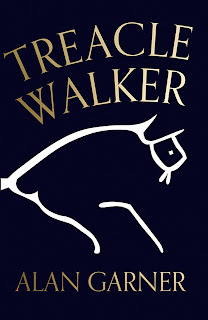 Alan Garner is, without doubt, one of the UK's greatest fantasy writers. I was privileged to grow up with his books, which aged in audience as I did, peaking for me with The Owl Service. Garner also visited my (and his) school, which the book is dedicated to, when I was 12, a really important moment in my young life. But I lost some enthusiasm with his adult titles, which were both difficult to follow and depressing. However, now well into his 80s, Garner has produced what is arguably his best yet.
Alan Garner is, without doubt, one of the UK's greatest fantasy writers. I was privileged to grow up with his books, which aged in audience as I did, peaking for me with The Owl Service. Garner also visited my (and his) school, which the book is dedicated to, when I was 12, a really important moment in my young life. But I lost some enthusiasm with his adult titles, which were both difficult to follow and depressing. However, now well into his 80s, Garner has produced what is arguably his best yet.Although Treacle Walker is a very compact book in large print, it is so intensely written that it still has considerable heft - I've seen it described by someone as poetry, and although I wouldn't personally say that, like the best poetry it does pack a huge amount into relatively few words. The book's protagonist is a young boy, but this is not a children's book. The closest parallel I have is Ray Bradbury's wonderful Something Wicked This Way Comes - the book captures much of the essence of childhood, but does so in a way that appeals to the nostalgic side of an adult who can see far more in it than a young reader.
Like all Garner's work a sense of place and time is hugely important. As someone brought up in Lancashire, the use of language from Garner's Cheshire youth evokes many memories, though you don't have to have that background to appreciate it. Just the references to donkey stones and rag and bone men, for example, bring so much back. There is even a reference to the old Pace Egg plays performed by mummers in the North West, when a character of Garner's says 'I have been through Hickety, Pickety, France and High Spain' - compare this with the doctor's claim in the traditional Pace Egg play to have travelled 'Through Italy, Sickly, High Germany, France and Spain'.
At one level, the book is a folk fantasy, and of course Garner does this brilliantly well. He has always combined local material with wider ranging concepts (for example the use of Ragnarok in his first novel), but never more so than here, where one of the elements, also featuring on the cover, is the white horse at Uffington, a powerful image, coincidentally situated near where I now live. But there is also more going on, particularly in the ending, suggesting a totally different take on what has occurred with a distinctly darker undercurrent.
Overall, this is a masterpiece, a book I will re-read many times. If it is a swan song, then like the legendary original it is something of intense beauty. Remarkable.
Treacle Walker is available from Bookshop.org , Amazon.co.uk and Amazon.com .
Using these links earns us commission at no cost to you
January 10, 2022
The Mysterious Case of Father Brown
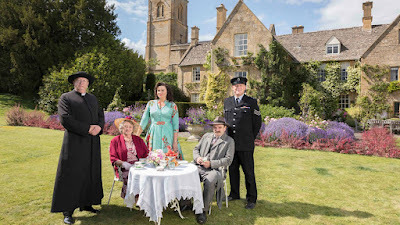 For many years I've been fond of G. K. Chesterton's Father Brown books. Brown is quite different in feel to his pre-war contemporaries such as those in works by Christie and Allingham. This mild-mannered, sleuthing Catholic priest relies on his experience of human nature, while justice weighs heavier than a strict interpretation of the law. But a TV adaptation has highlighted a strange anachronism that turns up surprisingly often in detective series.
For many years I've been fond of G. K. Chesterton's Father Brown books. Brown is quite different in feel to his pre-war contemporaries such as those in works by Christie and Allingham. This mild-mannered, sleuthing Catholic priest relies on his experience of human nature, while justice weighs heavier than a strict interpretation of the law. But a TV adaptation has highlighted a strange anachronism that turns up surprisingly often in detective series.Since 2013, Father Brown has appeared in daytime TV programmes on the BBC, though the stories are largely detached from the originals, in part because the series was moved to a postwar Cotswolds village, and, as often is the case with TV versions of literary detectives, other regular characters were added to the cast. The move to a fixed village location is useful to establish those regular characters, but it throws up the worst version I've ever seen of an incoherent anachronistic setting.
Period dramas like this - even cheapish daytime ones - often go to significant lengths to ensure that details of the setting are accurate. So, for example, a recent episode featured a copy of the Asimov book Second Foundation. Father Brown uses this to roughly fix a date, as the book 'only came out last year' - which would fit with the circa 1954 setting. Yet there is one glaring oddity.
A weaker example of this occurs quite often when dramas, especially murder mysteries, feature a church. For arts sake, the production people like to use old church buildings, yet for reasons of plot or simply to provide more dramatic fixtures and fittings (the inevitable confessional, for example), the buildings are decked out as Catholic churches. To put a Catholic church into a medieval English building would be like claiming that a first edition of John Donne came out in 1953. It's ignoring all of history since the Reformation - with the odd exception, we simply don't have ancient churches in this country that are used by a Catholic parish.
In the Father Brown series, though, things are taken a step further - not only does Brown have an ancient village church, but pretty well everyone in the village is a Catholic. It's mindbogglingly dissonant with reality, a timeslip from the sixteenth century. Still, the bread bin looks right for 1954, so that's okay.



